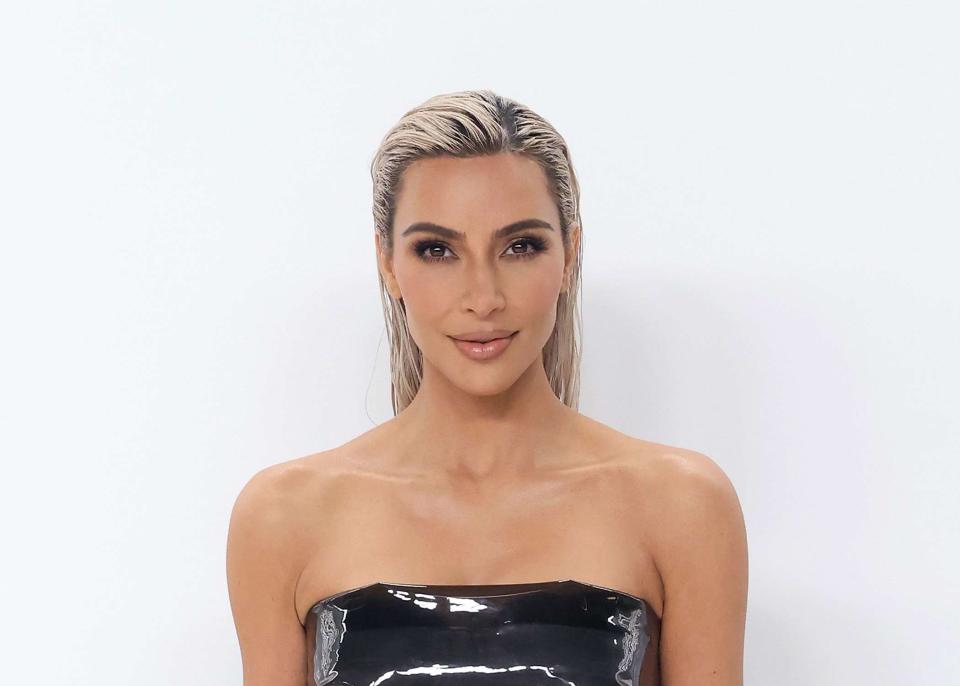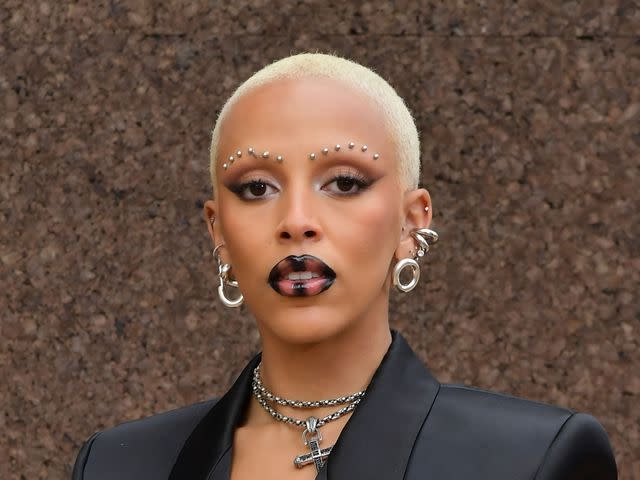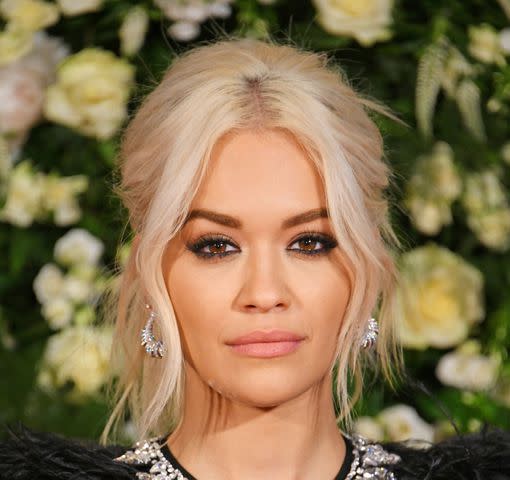How to Bleach Your Hair at Home Like a Pro

Getty Imahes
There are many reasons why someone might decide to bleach their hair and make it lighter. It could be a desire to overhaul their appearance, a way to camouflage gray, or something they’ve been doing for years and can’t quit. When it comes to how to bleach hair, there are two ways to do it: professionally at a salon or at home.
With beauty prices skyrocketing, especially highlights and high-lift color, the desire to bleach and color your hair at home may sound appealing. But a lot more goes into a DIY bleach job than you may think. Ahead, we break down everything you need to know about how to bleach hair at home, how to do it sans damage, should you go that route, and when it’s time to leave the process to the experts.
Meet Our Expert
Sharon Dorram is a celebrity colorist and owner of Sharon Dorram Color at Sally Hershberger Salon in New York City.
Cassandra Olivia is a hairstylist and colorist in New Castle County, Delaware.
Joseph Randall, hairstylist and owner of Color Haus in Charlotte, North Carolina.
What Is Hair Bleaching?
Hair bleaching is exactly what it sounds like using hair bleach (not household bleach) to lighten the hair's color. While bleaching your hair may sound fun and simple, it's anything but that. Dorram says people usually choose to bleach their hair at home because of budget. "Some people do not prioritize hair color in their beauty budget. Hair color is the least invasive way to look your best." The other reason for at-home bleaching is the convenience factor. "Everyone is busy. If you are handy, you may be able to get away with doing your color."
Going from black to bleach blonde in the privacy of your bathroom isn't realistic. Olivia says usually, at most, you can lighten hair one to two shades lighter than its current color. "Of course, this varies based on your natural hair color. Blondes and light brunettes can succeed more with at-home bleach than people with dark or black hair."
Is At-Home Bleaching Safe?
When it comes to how to bleach the hair, it's a whole other ballgame from a DIY single-process color. Dorram doesn't recommend lightening or bleaching your hair at home and, instead, leaving it to the pros. "There can be hazards to doing it yourself and lots of damage." Furthermore, she doesn't advise anyone with already colored hair to bleach at home, which can impair the hair's health, causing frizz, breakage, dullness, and hard-to-manage hair. "I also don't suggest anyone with very dark or curly hair do it because the result will always look unnatural. Dark hair can look brassy, reddish, or orange, and curly hair can make it difficult to create natural-looking highlights instead of stripes."
Randall says the only upside to DIY bleaching is maybe the cost. "But on the other hand, you get what you pay for. You have to understand the chemical science behind bleaching and the processes, and then you may be able to achieve a good result at home."
Related: The 10 Best Blonde Hair Colors, According to Celeb Colorists
As Olivia explains, the health of your hair plays a vital role in bleaching. Hair fraught with split or snarled ends is dehydrated, and chemicals and excessive exposure to bleach can worsen things. "Healthier hair always fares better during the bleaching process because it can withstand the damage that hair color causes," she says. "I've seen clients come into the salon with chunks of hair that split off and break because the hair was so weak from at-home coloring."

Getty Images
How to Choose the Right At-Home Products
Bleaching your hair at home involves mixing a lightening agent, either liquid or powder, with a developer, such as hydrogen peroxide, to open the cuticle and pull pigment out of the hair. The ingredients are the biggest difference between bleach and the corresponding color products used at home versus by your colorist. Randall explains that professional-grade hair-lightening products have ingredients of higher potency. "Typically, at-home kits do not offer the same level of power."
Investing in a hair bleaching kit is better than trying to piece together what you need. "The kits available are very basic," Dorram says. "They usually contain powder and a liquid bleach, which makes for easy application. Low-volume peroxide non-ammonia bleach products from professional companies like L'Oréal and Clairol are best." Some even contain toner. There are also bleach and color kits, like IGK's new Color Bright, to create a two-tone look, pop your money pieces, or dip-dye hair, and lightening kits from Madison Reed with everything needed to lighten hair at home.
How to Bleach Hair
1. Take Safety Precautions
For starters, please make sure you're working in a well-ventilated room and wearing a mask. "It's a good idea to invest in a professional coloring cape to keep your clothes clean," Olivia suggests. "Wear clothes that you don't care about in case they get bleached in the process. And prep your space by putting down old towels on the sink and floor and remove anything you wouldn't want to get damaged by the chemicals."
2. Wash and Dry Hair
Next, you'll want to wash your hair with a clarifying shampoo and use a conditioning treatment before bleaching it. Dorram recommends Virtue's Purifying Shampoo ($32) and Restorative Treatment Mask ($34). Then, dry the hair completely without using any styling or leave-in products, including oils, which can interfere with the color's development.
Tips
There's no need to wash your hair before bleaching it. In fact, the dirtier the hair, the better! Shampooing the hair before bleaching it can strip away its natural oils, which may dry it and the scalp. Plus, when the scalp has ample natural oil, bleach is less likely to cause micro tears and irritation.
3. Strip Test
Before placing bleach all over the hair, Dorram says to strip-test a small piece of hair below the ear. "Leave the bleach on for the time instructed, and make sure you like the results." She recommends doing the same with toner. "Leave it on for two to three minutes and dry the strand test before using it all over the head." Once you are happy with the color and degree of lightness on the test strands, it's time to apply the bleach all over while looking into a mirror.
4. Protect the Hairline
Apply coconut oil or a scalp color protector to the hairline, which can maintain the scalp's pH levels. Bleach is an alkaline product that can irritate the scalp (especially if yours is sensitive), so protecting it can reduce the risk of irritations and even post-coloring itching.

Getty Images
5. Mix the Bleach
Mix the bleach with the liquid developer in a bowl to create a single solution. Adding developer to bleach forces open the hair's cuticle to lift away the existing color and allow it to lighten.
6. Section the Hair
Separate the hair into four large sections (two in the back and two on top) with a comb or the handle of a color brush. Each section should be clean and well delineated from the next so you can easily apply the bleach without overlapping it onto the hair.
7. Apply Bleach
Use a hair dye brush to apply the mixed bleach to the hair. Start by concentrating on the back of the head and areas where the hair is darkest while avoiding direct application to the scalp (keep the bleach at least one inch away). Make sure to apply the bleach from the mid-shaft down until the entire section is well covered.
After the back of the head is complete, apply the bleach to the top of the head and then the front sections of hair. Dorram recommends taking thin strips of hair that frame the face and separating them away from the rest of the hair with a piece of cotton, Saran wrap, or foil. "Be careful that the hair you are lightening doesn't touch the rest of your hair."
8. Process and Rinse
Set a timer for 30 to 45 minutes and let the bleach process. The hair should lift to a banana-yellow color, not orange or red (unless that's the look you are going for). Then, rinse out the bleach using water and a wet towel. You can also spray down the hair with a water bottle to prevent the bleach from lifting further. Repeat until you reach the desired shade of lift.
9. Shampoo and Condition
Shampoo the hair with a gentle shampoo until the bleach runs out thoroughly. You'll want to make sure that all of the bleach is out of the hair. Otherwise, if the lightener or developer lingers in the hair, it can affect its health and moisture levels.
10. Apply Toner
Apply toner to the hair to achieve the right tone for your hair, but only use it if the bleach causes the hair to appear too light, ashy, or brassy or if you want to add cool or warm tones to your hair. Work the toner all over the head and leave it on for 10 minutes. Then, shampoo it out.
Related: The 18 Best Toners of 2023, Tested and Reviewed
Aftercare and Maintenance
In the end, if you're unhappy with the results, make an appointment with your colorist. Trying to cover up a bleach job gone awry isn't as simple as slapping on some temporary or box hair color. "No matter what, don't try to fix it at home," Olivia says. "It's a recipe for fried, damaged hair."
Lightening the hair to the desired shade of blonde is the easy part. Keeping it that way is more tedious. There's plenty to do to preserve your hair's health and bright, sharp color. Olivia says after coloring the hair, keep it out of the sun and wash it less frequently. "You can use a purple shampoo to counteract yellow tones that may develop."
Anytime the hair is lightened, it loses moisture, which needs to be replenished. "The best way to rehydrate the hair is with ingredients and products that boost the hair's health," Olivia says. "Cannabinoids, specifically CBD, CBC, and CBG, provide intense moisture to hair and help restore the natural balance of oils on the scalp and within the hair to help repair it. I recommend LEAF + FLOWER CBD Instant Damage Correction Shampoo and Conditioner. They both work to address the needs of compromised hair using a highly active cannabinoid blend of CBD, CBC, and CBG to leave hair feeling soft and manageable while adding shine and reducing frizz." Conditioning masks are also important to use weekly. "Some of my favorites are from Virtue, K18, and Shu Uemura," Dorram says. "They will keep your hair shiny, bouncy, and healthy!"
Frequently Asked Questions
Do you bleach your hair wet or dry?
You should only bleach dry hair. Olivia explains that the color will not lift as much on wet hair as on dry hair. "Wet hair is also more fragile," she says.
How many times can you bleach your hair in one session?
Once at most. Overbleaching the hair in a single session can cause major breakage and damage that’s hard to repair.
Can you use purple shampoo as a toner?
A traditional toner is always best if you don't have one on hand, Randall says you can use purple shampoo as a toner if, and only if, the hair is lifted to a light or pale yellow after bleaching. "If the hair has not reached that yellow shade, the purple shampoo will not serve any purpose. So if the hair is more yellow-orange or 'brassy,' you will need a blue shampoo to provide any toning of the hair."
For more InStyle news, make sure to sign up for our newsletter!
Read the original article on InStyle.

 Yahoo Sport
Yahoo Sport 





































